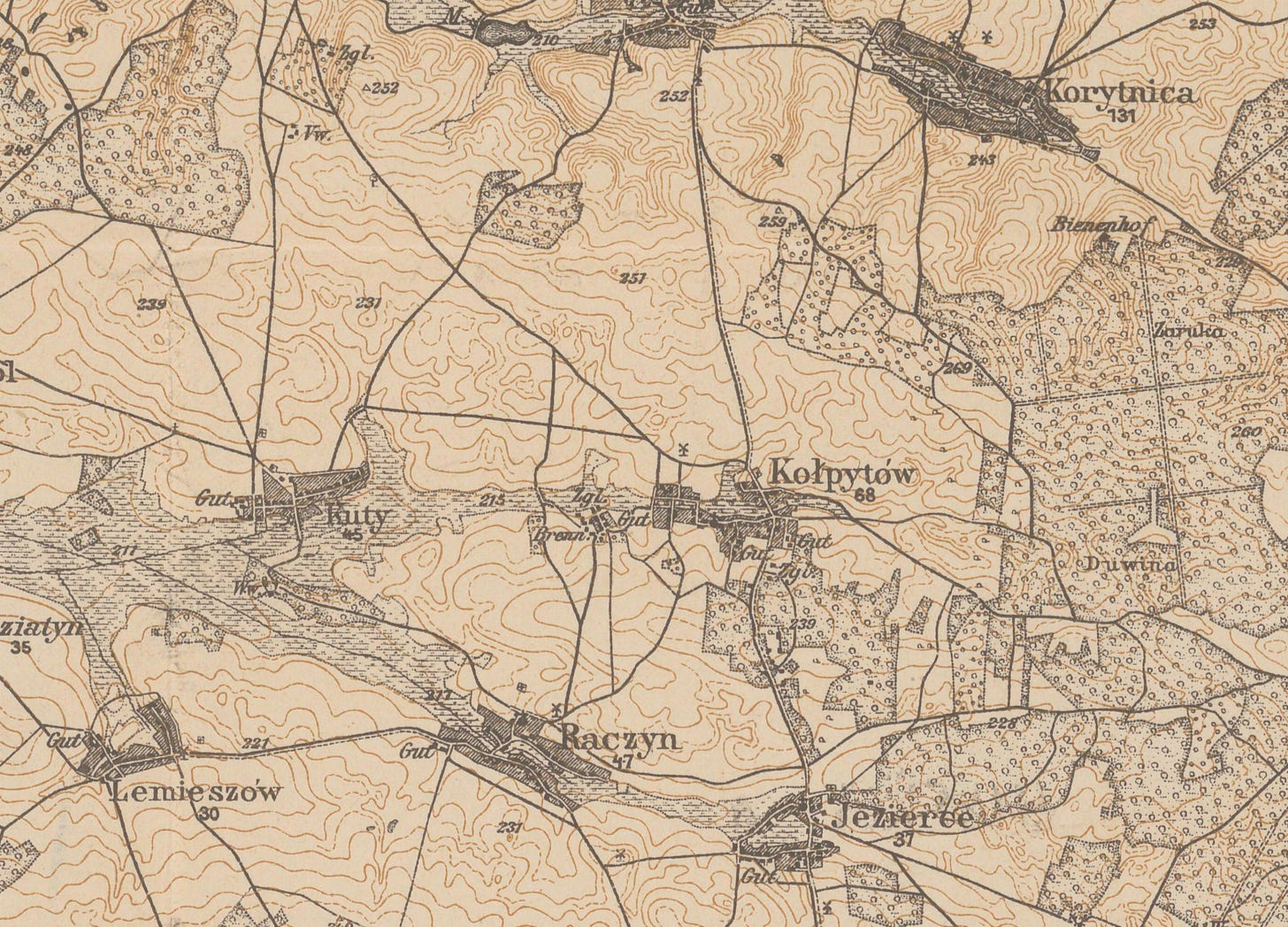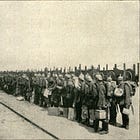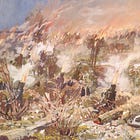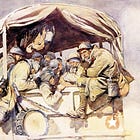Into the Trenches
Diary of a Stosstrupp Leader (Part III)
A verbatim translation of a portion of a diary found in the German Federal Archives, this post continues the series begun with:
Please note that the names of places mentioned in this post reflects present-day usage. The names given in the diary, which often sport spellings that differ from those of the maps provided with this series, appear within parentheses.
8 October 1916 (Sunday)
The commanding general of the 108th Infantry Division, Major General Beckmann, greeted us. Near the windmill of Kuty, we got a meal from a field kitchen.
From the windmill, which sats upon a piece of high ground, we could see, in the distance, the explosion of artillery shells. The miller said, ‘bum, bum, bum … not good’.
We marched to our position. In the forest occupied by the machine gun company, the commanding officer of our regiment, Lieutenant Colonel Breyding, greeted us. Hartmann and I stayed in a nearby shelter with the commanding officer of the Second Battalion of the 97th Infantry, Major von Cylander, his adjutant, First Lieutenant von Wulffen, and Sergeant (Unteroffizier) Reiber.
At midnight, these men and I walked to Hill 267, which was occupied by the Sixth Company (of the Second Battalion) of the 97th Infantry, commanded by Lieutenant Rudloff, who sent me to the First Platoon, commanded by Second Lieutenant Peters, who made me leader of the Fifth Squad.
Lieutenant Peters told me that the Arendt Station [a service that tapped enemy telephone wires] had learned that the Russians were digging tunnels under German positions and that, as a result, we might have to deal with the explosion of a mine. If this happened, I was to secure the avenues of approach to those of our trenches that had not been destroyed. What rotten luck, to go into the trenches just in time to be blown into the air.
Heavy trench mortar fire, especially from the Russian side, made nauseating noise and eerie flashes against the pitch-black night. When the shells fell behind our trench, I flattened myself against its back wall. When they fell in front of it, I pressed myself against its front wall.
to be continued …
Sources
The text comes from Alwin Lydding Meine Kriegstagbuch (My War Diary), unpublished manuscript, Bundesarchiv (German Federal Archive) N 382/1
The description of the Arendt Station comes from a post published on The Soldier’s Burden, a splendid website dedicated to the study of the German armies of the First World War.
The map comes from a 100,000 map published by the Prussian Geographic Service in 1915 (P39 Gorochów) I found it on Polona, the digital repository of Biblioteka Naradowa, the People’s Library of Poland.
For Further Reading








Well Herr Fahnenjünker-Unteroffiziere, your school training is over and live fire training has begun! We will skip the acclimation period and see how you do in the trenches! Have fun.
Great stuff! i love the transcripts of these translations. I lived in Europe for 11 years and i still recall the stories of the old Wehrmacht and SS. I don't condone anything the Nazis did, but a soldier's story, is still a soldier's story.